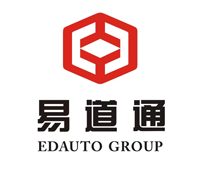In the rapidly evolving energy technology landscape, the transition from fossil fuels to renewable energy has brought significant changes in core technologies. Historically, the core technology of fossil energy is combustion. However, with growing concerns about sustainability and efficiency, energy storage is now a cornerstone of modern energy systems. Both electricity and heat require balanced energy storage solutions to ensure stable and reliable supply. This shift is critical because many primary power sources are inherently unregulated and uncontrollable, resulting in a mismatch between the generation side and the load side. Therefore, effective energy storage systems are crucial to bridge this gap.
There are many types of energy storage technology, each with its own unique advantages and applications. Lithium batteries, hydrogen storage, pumped hydro and air compression are some important energy storage methods. Furthermore, thermal storage plays a vital role in energy management. For example, a heat pump can raise low-temperature waste heat to the desired temperature and store it in a hot water tank, providing an efficient way to manage thermal energy. Electric vehicles (EVs) are also becoming one of the most promising energy storage resources in the future, with dual functions of transportation and energy storage.
EDAUTO GROUP is committed to advancing with the times and vigorously developing electric vehicle export trade. EDAUTO GROUP adheres to the concept of “electric vehicles are one of the best energy storage resources in the future” and exports Chinese electric vehicles to Middle Eastern countries. By promoting the export of vehicles of all types, the company aims to contribute to the global transition to sustainable energy solutions. EDAUTO GROUP’s competitive prices derived from first-hand sources have attracted many companies and individuals to cooperate with it, further consolidating its market position.
Pure electric vehicles are composed of multiple key components. Including on-board power supply, battery pack management system, power auxiliary facilities, motors, controllers, chassis, body, etc. According to the traditional car structure division method, pure electric vehicles can be divided into four main parts: motor, chassis, body and electrical components. This comprehensive structure ensures that electric vehicles are not only efficient, but also reliable, robust and meet the diverse needs of consumers.
One of the outstanding features of pure electric vehicles is their high cost performance. Charging an electric car is much cheaper than refueling a traditional internal combustion engine car. Additionally, electric vehicles have lower maintenance costs due to fewer moving parts and less wear and tear. This economic advantage makes electric vehicles an attractive option for consumers who want to reduce transportation costs while contributing to environmental sustainability.
The driving experience of electric vehicles has also been greatly improved. Modern electric vehicles offer longer range, greater power performance and higher levels of intelligence. These advancements ensure drivers enjoy a smooth, responsive and enjoyable driving experience. The integration of smart technologies in electric vehicles further enhances the user experience, providing features such as advanced navigation systems, autonomous driving capabilities and seamless connectivity.
Post time: Sep-26-2024



